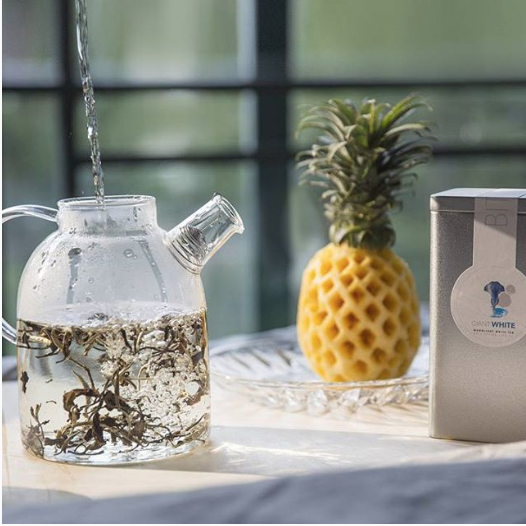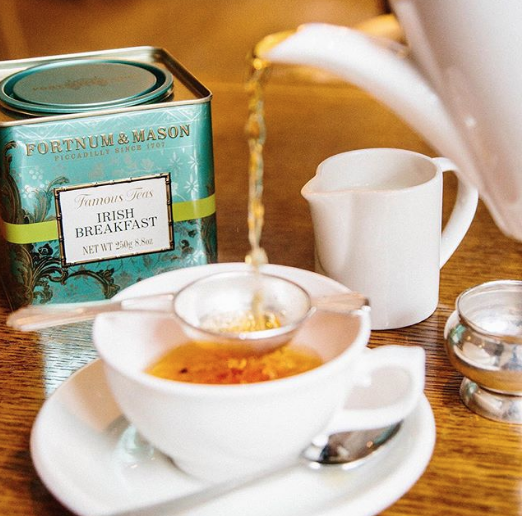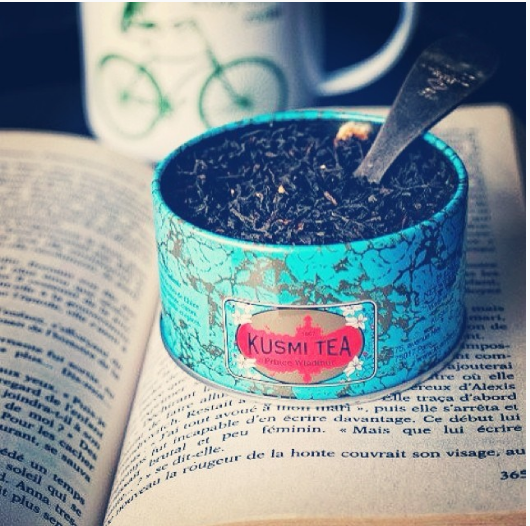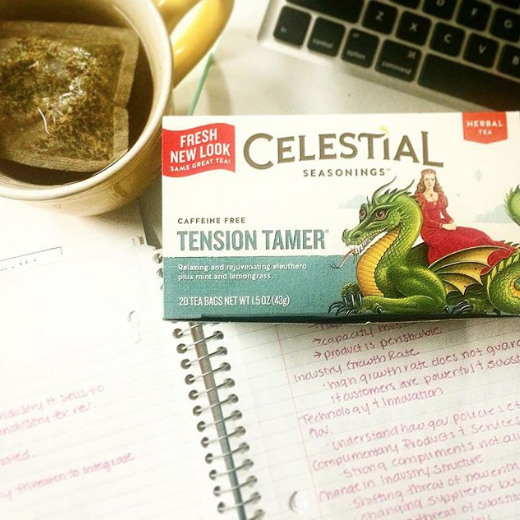Today I have a guide for you all about TEA. We’re going to look at what tea is, where it comes from, and most importantly, why it’s so amazing.

Photo courtesy of @bitterleafteas on Instagram
All tea leaves come from the same plant: the camellia sinensis, AKA the tea plant. It is native to Asia, but now it’s grown all around the world. Herbal tea doesn’t actually contain camillia sinensis, so it’s not strictly a tea. But we’ll come back to that.
There are thousands of types of teas out there, but there are five main styles: black, white, green, oolong and pu-erh. These styles are different because of the processing of the leaves and levels of oxidation. The types, however, completely depend on the growing climate, even year by year. Here’s a quick rundown of two of the most popular types (black and green), plus a note on herbal teas.
Black Tea

Photo courtesy of @fortunms on Instagram
Black tea is hands down the most popular type of tea. It is most commonly available in everyday tea bags, and its varieties include darjeeling, lapsang souchong, assam and ceylon. Just for the record, Earl Grey is a black tea that’s flavored with bergamot orange.
Darjeeling is known as the champagne of the tea world and tastes amazing. Lapsang souchong is one of my favorites, but it does divide people as it’s an acquired taste. They say Winston Churchill use to love drinking this with a scotch (hot toddies, anyone?). Assam and ceylon are a match made in heaven: blend them together, and you’ve got yourself the English Breakfast, the most popular tea in the UK.
For the novice tea drinker, Twining’s English Breakfast is the way to go. For the more experienced connoisseur, try my absolute favorite, Fortnum and Mason’s Royal Blend.
Green Tea

Photo courtesy of @kusmiteaparis on Instagram
This is the most popular tea consumed in Asia and accounts for 26 percent of tea across the world. But green tea is best known in this side of the world for its health benefits. It’s associated with lower blood pressure and healthier blood cholesterol, both of which help your heart.
There are two main styles of green tea: Chinese and Japanese. Chinese gunpowder tea is made by heating the tea leaves over a fire, which gives it a really nice toasty flavor. That’s perfect for beginning tea drinkers. Japanese buncha, however, is usually steamed, so that gives it a grassy, vegetable taste. Matcha, which has gotten quite popular recently, is a powdered Japanese green tea.
Teavana has a great matcha collection that is perfect for any curious tea drinker. For those who prefers a twist on traditional blend, Kusmi’s Green St. Petersburg is one of my all time favorites.
Herbal Teas

Photo courtesy of @celestialtea on Instagram
Told you we’d get back to this! Herbal tea doesn’t have any tea leaves, but it nevertheless tastes delicious. It’s made from mixing herbs, spices and dried fruit to hot water, tastes delicious and is caffeine free. You can get things like lemon, ginger, raspberries, peppermint… the list goes on.
While we’re on the subject, rooibos isn’t a tea either. A native plant from South Africa, it produces a delicious red-tinted infusion perfect before bedtime when served with a dash of milk.
Celestial Seasoning’s fruit tea sampler is delicious served hot or cold, and Yogi’s Bedtime blend is definitely true to its name.



